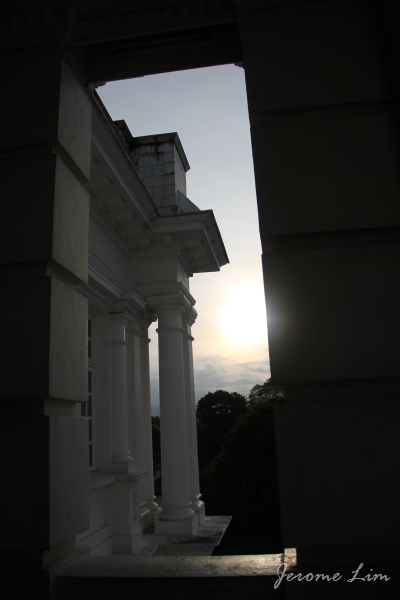Fresh from an excursion to Kuala Lumpur (KL), I found myself some two hundred kilometres north of KL in a rather quiet city that features some wonderful pieces of architecture from a time when it was thrived on the harvest it made from the ground. The city, Ipoh, the administrative capital of the northern Malaysian State of Perak, lies in a beautiful setting surrounded by limestone hills in the Kinta Valley of Perak, an area rich in tin, and it was from the tin mines around the area that provided much of the wealth that city was built on. In KL, motivated by a desire to learn more about the development of the Malayan Railway fed by nostalgia fueled by the knowledge that the shift of the KTM station to Woodlands by the time the second half of 2011 arrives (which would be that after more than a century of running through Singapore, the Malayan Railway would cease to operate across the island), I sought out two of Arthur Benison Hubback’s railway inspired masterpieces, the Railway Administration Building, and the grand old Railway Station, both built during the turn of the 20th Century and feature the Moorish inspired designs that give old KL a distinct flavour. I found myself doing the same in Ipoh, where another two of Hubback’s great architectural works, the Railway Station and the Town Hall proudly stood.
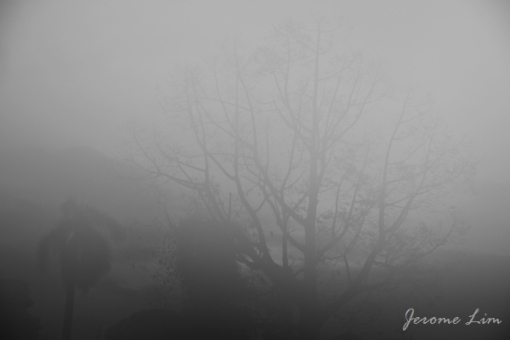
Arriving early at the Ipoh tree in the main square, two of Hubback's masterpieces that Ipoh is blessed with in the area around the Square were shrouded in morning's mist.
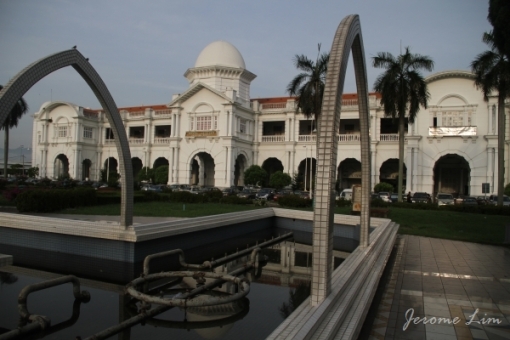
But, the mist soon lifted to reveal the magnificent dome dominated structure of Ipoh's grand railway station.
Although plans for a grand station in Ipoh were put forward in the first decade of the 20th Century and work was supposed to commence in the early part of the next decade and completed by 1914, it was only in 1914 that construction on a station “worthy of the town” started (in 1914). That coincided with the Great War of 1914 to 1918 and due to a shortage of funds and material due to the War, it was only fully completed in 1917 with the completion of the Station Hotel which opened on 1 May 1917. The station building which is fondly referred to as the “Taj Mahal of Ipoh” by Ipoh residents for its magnificent dome dominated structure. Plans for it were described by the Straits Times in 1915 as “the palatial station and hotel, somewhat after the plan of the one in Kuala Lumpur”, and by the Singapore Free Press and Mercantile Advertiser in 1914 as “in many ways an improvement on the Kuala Lumpur Railway Station structure, which had so far remained supreme as one of the finest railway stations in the East”. Built in concrete and steel, due to what was described as a “lack of any good building stone in the Federated Malay States” on the site of a hospital, the Neo-Classical styled station was to provide a “front door worthy of Ipoh’s status as the second city in the F.M.S.” and form part of a “fine entry” into the town along with the Town Hall and Town Square facing the station.

The Neo-Classical styled A. B. Hubback designed station building features a main dome as well as minor domes and was said to be a station building that were among the most magnificent buildings East of the Suez. The building is also referred to as the
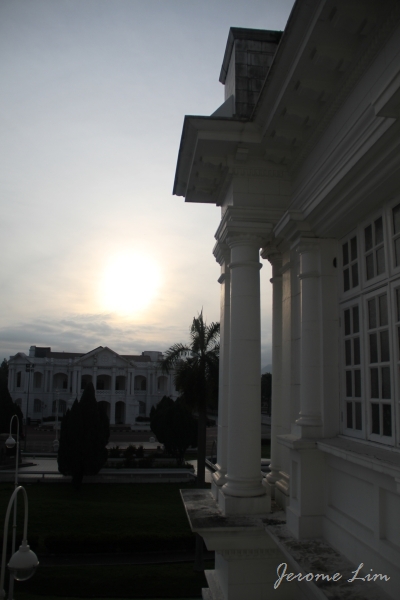
The station building stands across the main square from another of A. B. Hubback's works, the Town Hall. Both buildings together with the square were meant as buildings that would be fitting of Ipoh's status of the FMS' second city and to provide a "fine entry" into the city.
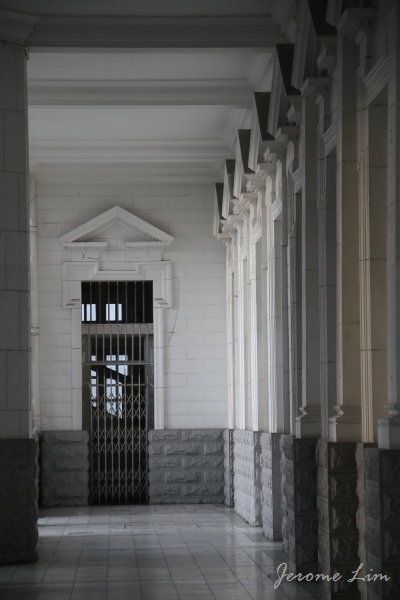
A corridor at the front of the magnificent building.
Wondering around the imposing façade of the whitewashed station in the shadows of the towering cloud shrouded tops of the limestones hills in the background that early New Year’s eve morning, I couldn’t help but be held in awe of the 183 metre arched loggia that dominates the front of the station’s ground level as I stood below it, giving me a sense of how grand the station would have been in the setting of the early 20th Century Ipoh. Although resembling its sister station in KL in many ways, the station in Ipoh is much more refreshing in many ways with a lighter and a happier feel to it, being smaller than the one in KL. It certainly is worth a visit to and is one where (for the time being at least), you will discover the quaint old Station Hotel that now occupies most of the upper floors of the building that once had also held accommodation (a total of seventeen bedrooms) for the station’s own officials, a throw back to the days of old when it would have been thought fashionable for the well heeled traveller to put up at a station’s hotel. Ipoh had in fact been one of three FMSR stations that had been afforded this luxury, with the one at KL and at Tanjong Pagar being the other two, and is the only station currently in Malaysia (and Singapore) that still has a hotel functioning at the station.

The platform side of the station building.

The station and the main platform ... a modern styled awning has been erected over what is now the electrified tracks of the KL to Ipoh line.

An alternative view of the awning over the platforms.
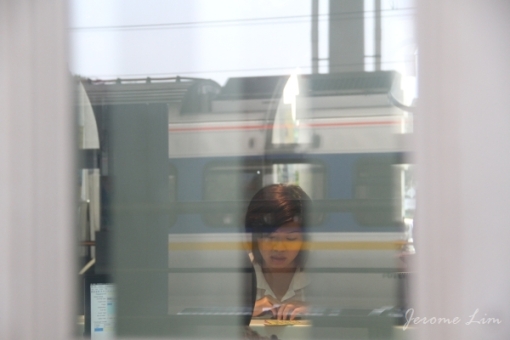
A peek at the ticket counter through a window on the platform.

Part of the 183 metre long loggia at the front of the station.

The part of the station leading up to the hotel entrance.

The entrance to what is currently the last of the three station hotels to remain in operation in Malaysia and Singapore.
Stepping into an old world elevator, the shaft of which staircase wound around, reminiscent of the old world (and somewhat dingy) hotels (and sometimes youth hostels) that I usually found myself putting up in travelling on a budget in Europe during my days as a student, was a sign of what was to come. In it, I was transported up to the lobby at the top and into a world that somehow seemed frozen from a time when perhaps railway travel would have been thought to be not just fashionable, but romantic. The ceramic tiled floor that I stepped out on certainly exuded that old world feel, as did the wooden counter of the hotel’s reception and the armchairs that sat opposite the counter. The lobby led to a wide and expansive balcony to which some of the rooms opened to that offered a splendid view of the city’s main square, the front of the station building itself and the magnificent Town Hall. In one corner of the long balcony, guests were having breakfast in a wonderful old style setting and at the other end, more old style armchairs and coffee tables were arranged as if to convince the visitor of the old world charm of the hotel.

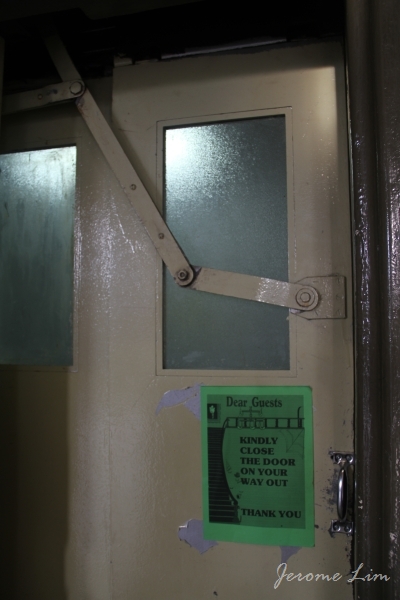
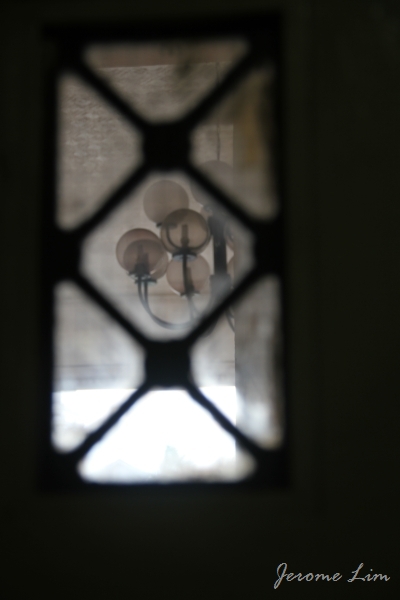
The old world elevator that transports you into a world that time has left behind.


The ceramic floor tiles, the reception counter and the old armchairs that greeted me at the elevator landing certainly belonged to a forgotten time when perhaps the romance of train travel was very much alive.


The balcony on the top level of the station hotel ... also serves as a wonderful place to have breakfast at.

More views of the top level.

The hotel did seem a little run down, seeing much grander days when its clientele would have boasted of the who’s who of the British administration, when it could perhaps have rivaled the likes of Raffles Hotel in Singapore and the E&O Hotel in Georgetown, but nonetheless still has the charm to pull a few romantics (like me) in – and on another day, I might have been tempted to check in there and then but I had a date with the new year in KL. Stepping down into the mezzanine level, it was apparent that the world that I had visited had yet another dimension to it, and for a while, it looked as if I had stepped into a correctional facility with the cell like rooms arranged around a large corridor or lobby. But taking time to adjust to my surroundings and the soft light that streamed into the area from the skylights above, the level certainly had a charm of its own, with painted cemented floors reminding me of some of the old seaside hotels by the sea that I had stayed in previously. It certainly was a world apart, and I suspect that the rooms which were facing the two sides of the station building would be well furnished as well as open up to some nice views, particularly those that are on the reverse side of the station which face the pretty limestone hills beyond Ipoh. Looking at the layout of the rooms and the relatively low ceiling on the mezzanine, I believe that the area which I had walked down into might have formerly been the units which has served as the rooms which accommodated the servants or “boys” for whom, as described by the Singapore Free Press and Mercantile Advertiser, in an article dated 16 May 1914, the provision of “would be a great advantage”.

The stairway back in time.
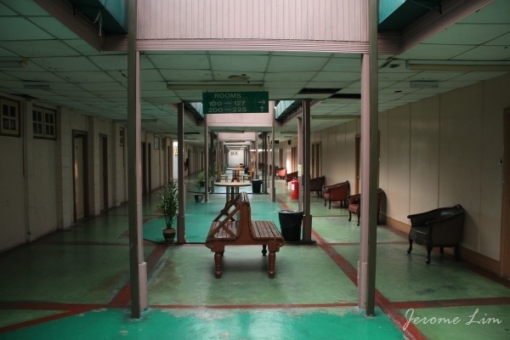
The different world on the mezzanine level ...
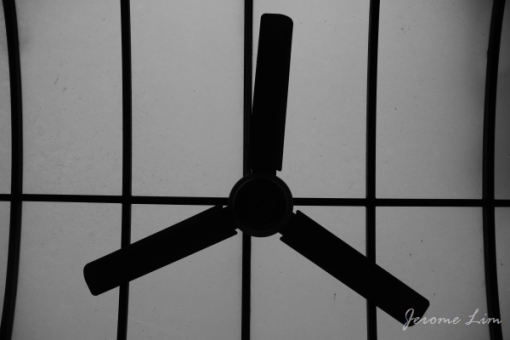
A fan seen against the awning which must have been added later.
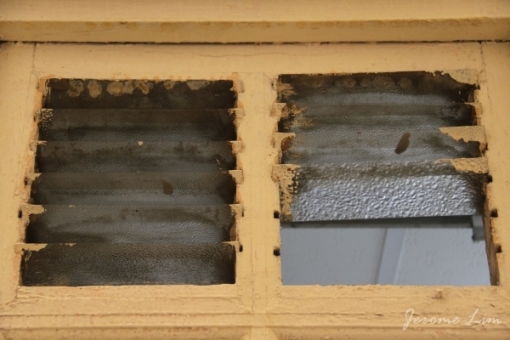
Ventilation louvres ...
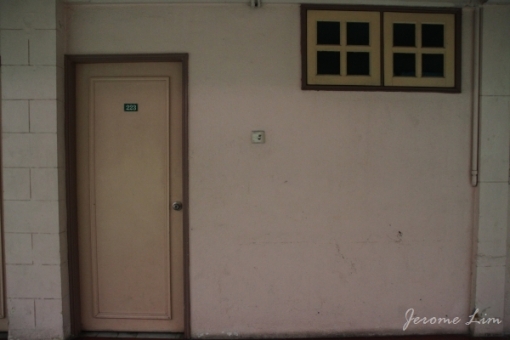
Rooms that look like cells ....

An old window that opens to an air well ....

Wooden panelling ...
After a short, but satisfying visit to the station and the hotel, it was now time to discover more, and to indulge in the wonderful mouthwatering offerings that Ipoh has in store … about that I had previously posted, but before that, I had another date with a delightful old lady that had not been in the pink of health, but has obtained a new lease of life just up Jalan Panglima Bukit Gantang Wahab (Club Road) on which I should be writing another post on.
